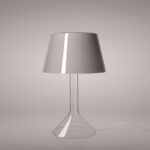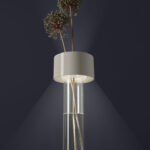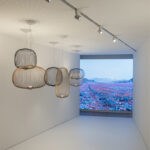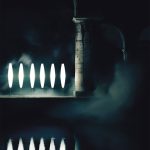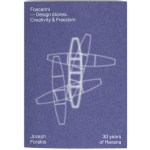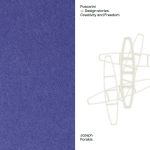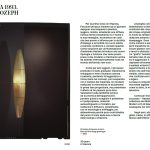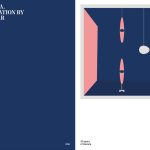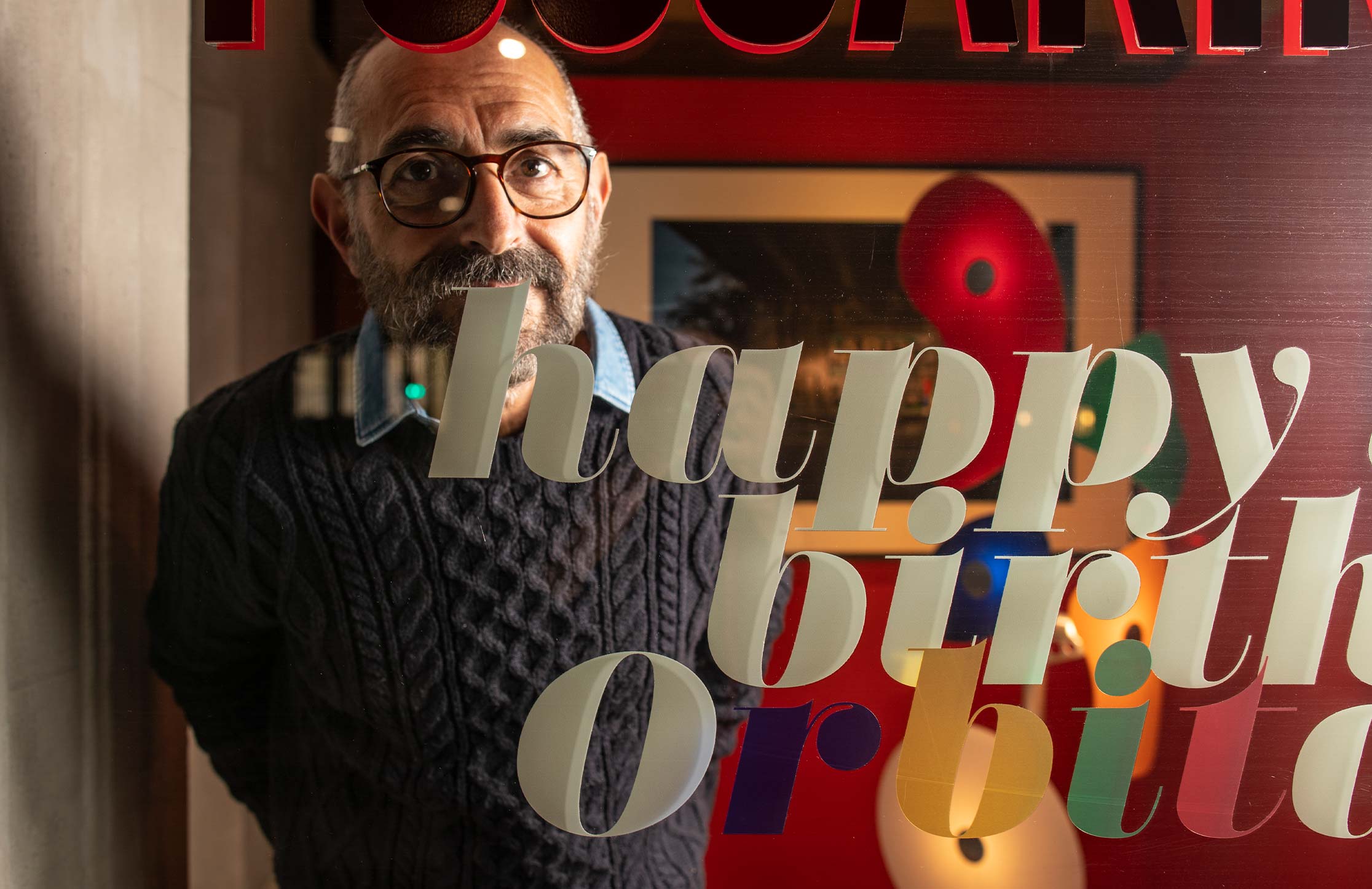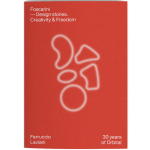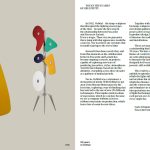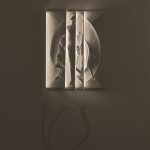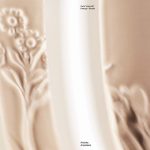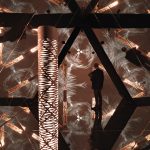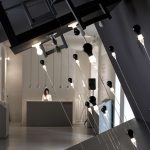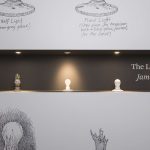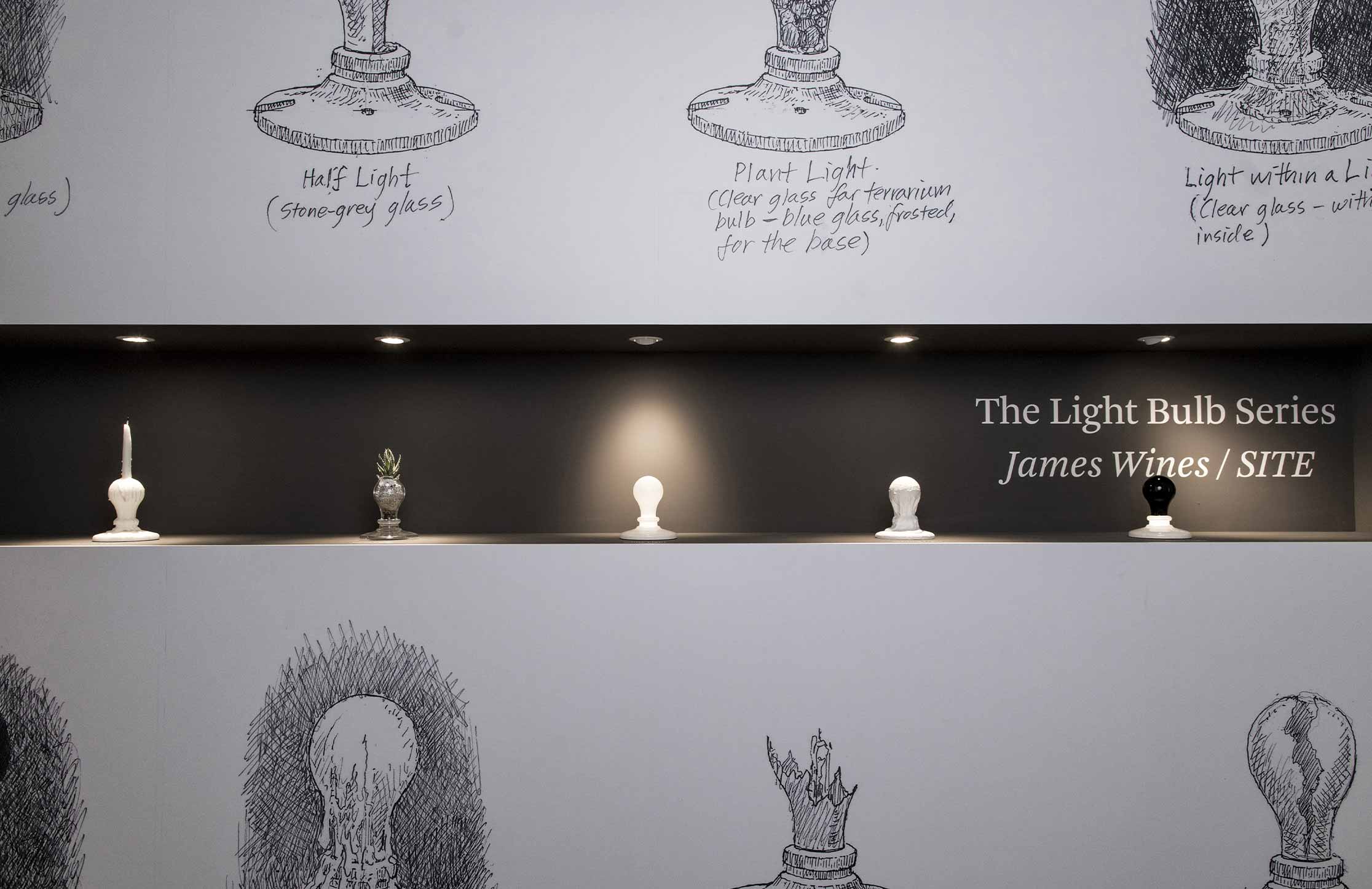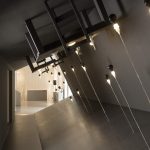When and how did the Lumiere project begin (the spark, the people involved at the start)?
It began many years ago, so recalling all the people involved calls for an effort of memory that isn’t easy at my age, perhaps. I can tell you about the context, though. It was a period in which I had started working with Foscarini on a sort of corporate overhaul. They had called me in to coordinate things, which could mean a sort of art direction of the new collection, because they wanted to change the company’s approach.
Foscarini was a pseudo-Muranese business, in the sense that its home was Murano, but its mentality was not exclusively rooted there. We began to work on this concept: to conserve the company’s identity (that of its origins, therefore Murano and glass) while differentiating it from the attitudes of the other Murano-based fi rms (i.e. furnaces, blown glass), trying to add technological details to the product to give it character, making Foscarini into a “lighting” company, more than a producer of blown glass. This was the guiding concept for the Foscarini of the future, at the time.
Where was Lumiere invented? What led to its form-function (design constraints, the materials: blown glass and aluminium)?
Based on the guideline I have just described, we began to imagine and design products during our meetings. At one of those meetings – I think we were still in the old Murano headquarters – I made a sketch on a piece of paper, a very small drawing, it must have been about 2 x 4 cm: this glass hat with a tripod, just to convey the idea of combining glass and casting, because the casting of aluminium was a very contemporary, new idea at the time. So this little tripod with the casting and the glass wasn’t so much the design of a lamp as a drawing of a more general concept: “how to put together two elements that would represent the characteristics of the company’s future products”. In practice, that was the intuition.
One moment you remember more than others in the story of Lumiere (a conversation with the client, testing in the company, the first prototype)?
Well, definetely the moment when Alessandro Vecchiato and Carlo Urbinati showed interest in my sketch, in that intuition. I remember that Sandro took a look at the drawing and said: “That’s nice, we should make it”. The product was immediately glimpsed in that sketch. And I too thought the drawing could become a real product. So Lumiere was born.
We live in a society of rapid obsolescence. How does it feel to have designed a success that has continued for 25 years?
Those were truly diff erent times. When you designed something, the considerations of companies were also made in terms of investment, of its amortisation over time. So the things you designed were more extensively thought out. What has changed today is not the companies but the market, the attitude of the consumer, who has become more “mercurial”. Today’s consumer has been infl uenced by other merchandise sectors (i.e. fashion and technology) not to desire “lasting” things. So the expectations companies have regarding products are also defi nitely more short-term. When a product (like Lumiere) has such a long life in terms of sales, it means it is self-suffi cient, a product that wasn’t necessarily paying attention to trends, at the moment. That is precisely what makes it appealing, somehow. It brings pleasure, to the person who buys it and the person who designed it. Personally, I am pleased that Lumiere is a “sign” that is still recognizable, still has appeal: 25 years are a long time!
How has this context “made its mark” – if indeed it has – on the skin and mind of Rodolfo Dordoni, man and architect?
I think about two important moments that infl uenced my work. The fi rst is the encounter with Giulio Cappellini, who was my classmate at the university. After graduation, he asked me to work in his company. Thanks to this encounter I was able to learn about the world of design “from the inside”. I worked for 10 years, getting to know about all the aspects of the furniture sector. So my background is that of someone who knows, “in practice”, about the entire chain of design production. This led directly to the second of my important moments. Thanks to this practical experience, this work in the fi eld, when companies turn to me they know that they are not just asking for a product, but also for a line of reasoning. And often this reasoning leads to the construction of relationships with companies that become long discussions, long conversations, which help you to know the company. Knowing the company is a fundamental factor to analyse a project. I like to work – I’m a bit spoiled, in this sense – with people with whom I share similar intentions, similar goals to achieve. Then you have the possibility of growing together.
The Nineties:a Google search brings up the Spice Girls, Take That, Jovanotti with “È qui la festa?”, but also “Nevermind” by Nirvana and the track by Underworld in the soundtrack of the fi lm Trainspotting, “Born Slippy”. What comes to mind if you think about your experience of the Nineties?
For me the Nineties were the start of a progressive technological misunderstanding. Meaning that I started to no longer understand everything that happened from the vinyl LP onward, in music, technologically speaking. I often think back on how I criticized my father, when I was a kid, for being technologically backward. Compared to the way I am nowadays, his backwardness was nothing, if I think about my “technological inadequacy” as opposed to my nephews, for example. We might say that the Nineties were the start of my “technological isolation”!
What has remained constant for Rodolfo Dordoni the designer?
Drawing. The sketch. The line.


